Bayard
Bayard's JournalMolecule responsible for robbing Venus of its water may finally have been identified
A new water loss mechanism on Venus explains how the planet lost all its water, turning the planet from a potentially habitable world into the parched hellscape we know today.

Venus, as seen by NASA’s Magellan spacecraft. (Image credit: NASA/JPL)
Scientists have identified a water-loss mechanism on Venus that could explain how the once water-rich world became completely parched.
In the newly identified process, linked to a previously overlooked molecule high in Venus' atmosphere, water escaped Venus at double the rate previously estimated. As faster water loss means less time is needed to boil away the planet's water reservoir, scientists say Venus may have harbored oceans — and potentially habitable conditions — for longer than previously thought before the drying process began.
"This would provide more time for possible life to arise," study co-author Eryn Cangi, a research scientist at the Laboratory for Atmospheric and Space Physics (LASP) in Colorado, wrote in The Conversation. "Our results don't mean oceans or life were definitely present, though — answering that question will require lots more science over many years."
Prior studies suggest that both Venus and Earth likely received similar amounts of water early in their history, mostly from water vapor-spewing volcanoes and icy comets that frequently bombarded the worlds. Estimates suggest Venus once had enough moisture to cover its surface in about 1.8 miles (3 kilometers) of water. However, Venus receives far more sunlight than Earth, and previous research revealed this sunlight likely boiled away the planet's water reservoir by breaking atmospheric water molecules into hydrogen and oxygen atoms. Once free, the lightweight hydrogen escaped into space via a process known as hydrodynamic escape, leaving Venus without one of the two ingredients needed to form water.
The process explains how most of Venus' water evaporated from its atmosphere, likely within the first billion years of the planet's history. However, it doesn't account for the last 330 feet (100 meters) worth of water that was likely left behind once the escape process stopped, soon after most hydrogen atoms exited Venus, the researchers of the new study said.
Prior studies suggest that both Venus and Earth likely received similar amounts of water early in their history, mostly from water vapor-spewing volcanoes and icy comets that frequently bombarded the worlds. Estimates suggest Venus once had enough moisture to cover its surface in about 1.8 miles (3 kilometers) of water. However, Venus receives far more sunlight than Earth, and previous research revealed this sunlight likely boiled away the planet's water reservoir by breaking atmospheric water molecules into hydrogen and oxygen atoms. Once free, the lightweight hydrogen escaped into space via a process known as hydrodynamic escape, leaving Venus without one of the two ingredients needed to form water.
https://www.livescience.com/space/venus/molecule-responsible-for-robbing-venus-of-its-water-may-finally-have-been-identified?utm_term=55C996C6-4393-4B13-9736-9BEC0BC6AFA6&lrh=990ccd8e582dc48a5de81889b47c5d726c369528246fb5cf774b4c820833a528&utm_campaign=368B3745-DDE0-4A69-A2E8-62503D85375D&utm_medium=email&utm_content=47A2BCED-0F21-4553-A4CD-7C873CFF8269&utm_source=SmartBrief
Brazil battles nature as 'largest ever' floods submerge whole cities
Horse stuck on roof after flooding hits southern Brazil
Brazil battles nature as ‘largest ever’ floods submerge whole cities
New Interesting Discoveries Around The World
Edith Steiner, A Jewish Woman Who Survived The Holocaust, And John Mackay, The Scottish Soldier That Saved Her. They Celebrated Their 71st Wedding Anniversary This Year

Pencil Drawing By 16-Year-Old Artist Shania Mcdonagh!

Unexpected Photo Bomb
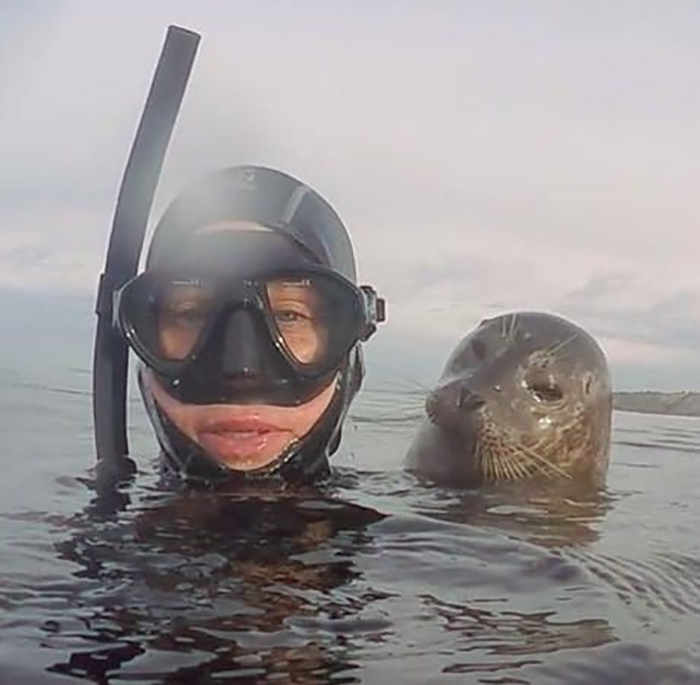
Took Me A Second To See It. Mother Nature Is Amazing
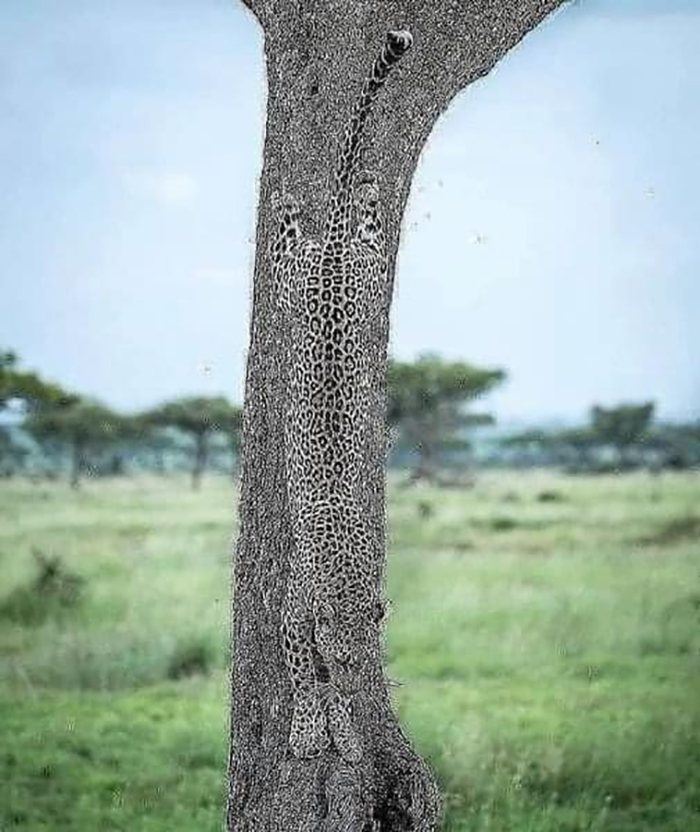
A Wheat Field Next To A Lavender Field

Incredible Photo Captures A Woodpecker Flying With A Weasel On Its Back

Imagine Finding This On Your Front Porch In The Morning

This Library Is 114 Years Old (for Hermetic)

The Skeleton Of A Puffer Fish. When You Think Nature Cannot Amaze You Anymore
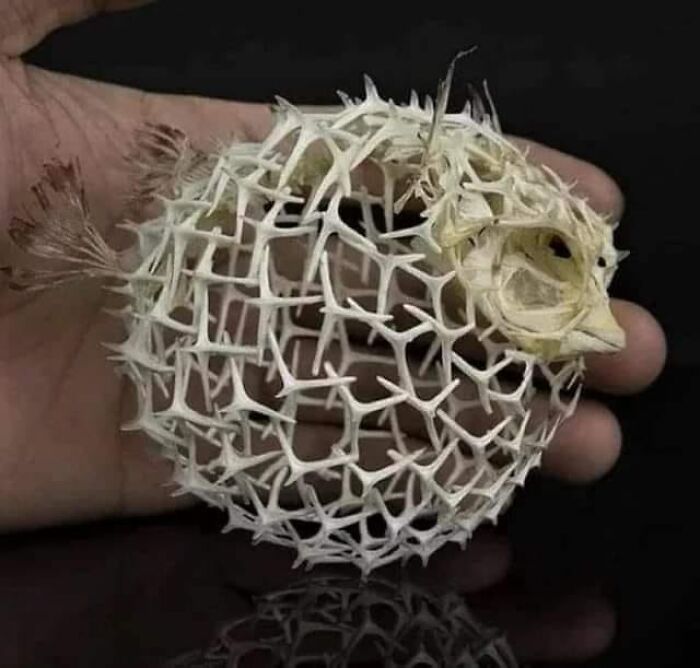
Architecturally Unbelievable. Sumela Monastery In Trabzon Province In The Black Sea Region Of Turkey

300 Year Old Oak Trees, Oak Alley Plantation, Louisiana

Ginormous Octopus!

Two Rivers Meet Without Mixing In Georgia
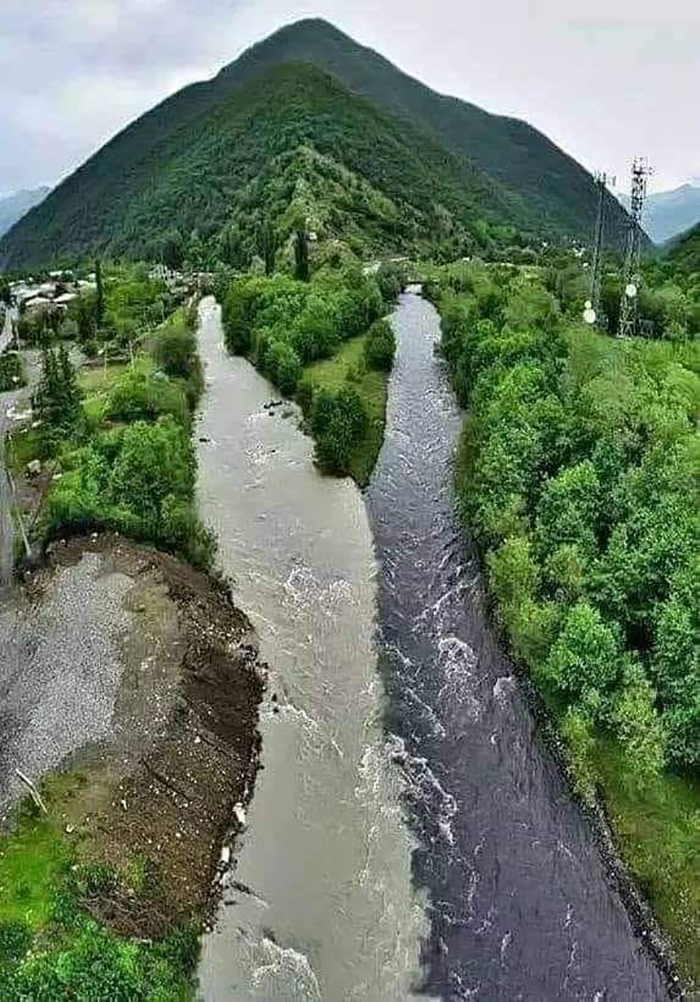
Dolphin Baby In Mother's Womb, How Amazing Is This?

Many more wondrous pics at:
https://www.boredpanda.com/world-beauties-and-wonders-pics/?utm_source=pinterest&utm_medium=link&utm_campaign=prime
Cat-Shaming Moments
Why should dogs have all the fun?
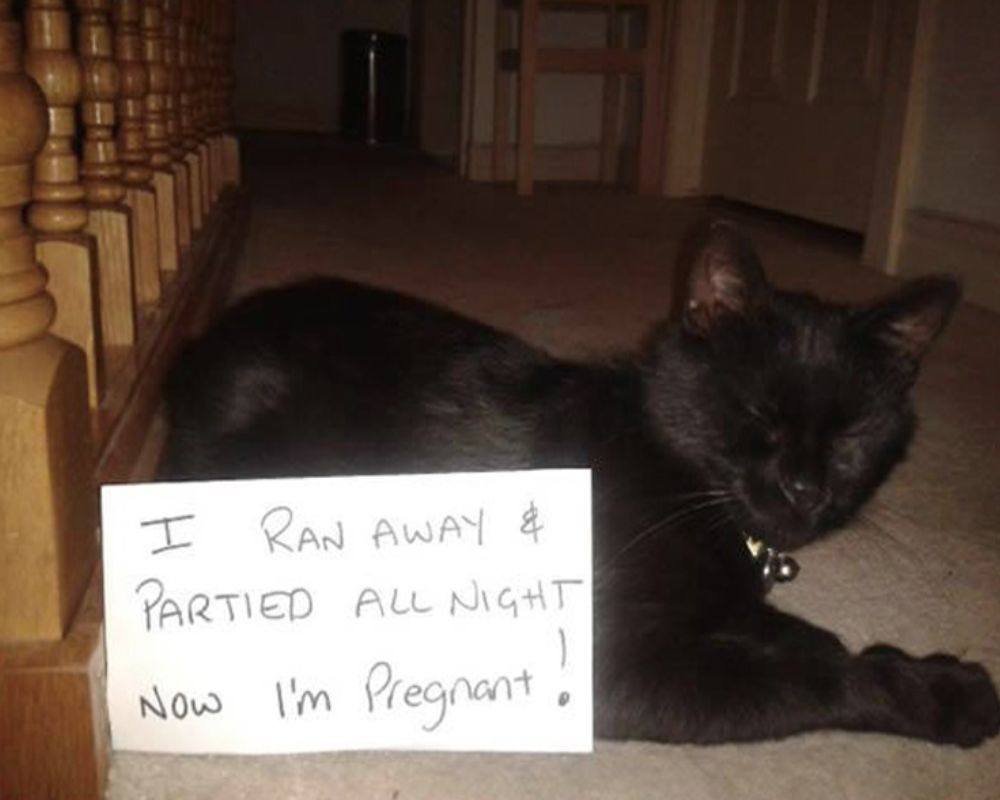












More at:
https://www.simplyurbans.com/trending/cat-shaming/?utm_source=taboola
Neanderthal woman's face brought to life in stunning reconstruction
With her long, brown hair and determined gaze, the new facial reconstruction lets us peek into the world of an archaic human who lived tens of thousands of years ago.
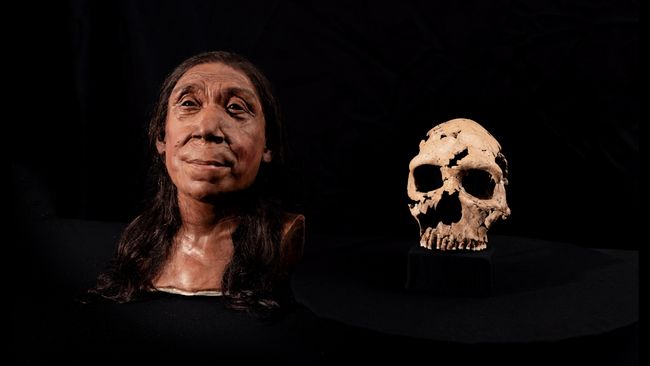
The recreated head of "Shanidar Z'' shows a Neanderthal woman who lived about 75,000 years ago. (Image credit: University of Cambridge; BBC Studios/Jamie Simonds)
A Neanderthal skull that was crushed to bits 75,000 years ago has been pieced back together and used to recreate the face of a wise-looking archaic woman with dark, flowing hair.
Archaeologists painstakingly pieced together the skull of the individual, who researchers have named Shanidar Z, from hundreds of flattened bone fragments discovered inside Shanidar Cave in Iraqi Kurdistan in 2018. Her skull is believed to have been crushed shortly after her death, possibly by rockfall, and then compacted by tens of thousands of years of sediment.
And now, with the help of surface scans and 3D-printing techniques, archaeologists have brought her synthetic face to life — muscle, skin and all. They detailed their efforts in a new documentary titled "Secrets of the Neanderthals," which launched on Netflix May 2.
"The skulls of Neanderthals and humans look very different," Emma Pomeroy, a paleoanthropologist at the University of Cambridge who's featured in the documentary, said in a statement.
https://www.livescience.com/archaeology/neanderthal-womans-face-brought-to-life-in-stunning-reconstruction?utm_term=55C996C6-4393-4B13-9736-9BEC0BC6AFA6&lrh=990ccd8e582dc48a5de81889b47c5d726c369528246fb5cf774b4c820833a528&utm_campaign=368B3745-DDE0-4A69-A2E8-62503D85375D&utm_medium=email&utm_content=F3DF1F93-C9DA-4D86-A379-AF4EF3CCCE41&utm_source=SmartBrief
They estimate she was about 45 years old. That would have been a very old woman back then.
Orangutan seen treating wound with medicinal herb in first for wild animals
Sumatran ape applied sap and leaves to open cut after suspected fight with another male, say scientists
The high intelligence levels of orangutans have long been recognised, partly due to their practical skills such as using tools to retrieve seeds and forage for insects. But new research suggests the primate has another handy skill in its repertoire: applying medicinal herbs.
Researchers say they have observed a male Sumatran orangutan treating an open facial wound with sap and chewed leaves from a plant known to have anti-inflammatory and pain-relieving properties.
It is not the first time wild animals have been spotted self-medicating: among other examples, Bornean orangutans have been seen rubbing their arms and legs with chewed leaves from a plant used by humans to treat sore muscles, while chimpanzees have been recorded chewing plants known to treat worm infections and applying insects to wounds.
However, the new discovery is the first time a wild animal has been observed treating open wounds with a substance known to have medicinal properties.
“In the chimpanzee case they used insects and unfortunately it was never found out whether these insects really promote wound healing. Whereas in our case, the orangutan used the plant, and this plant has known medical properties,” said Dr Caroline Schuppli, senior author of the research based at Max Planck Institute of Animal Behavior in Germany.
The team say the findings offer insight into the origins of human wound care – the treatment of which was first mentioned in a medical manuscript dating to 2200BC.
https://www.theguardian.com/science/article/2024/may/02/orangutan-seen-treating-wound-with-medicinal-herb-in-first-for-wild-animals-max-planck-institute-sumatra
TX farmers: "company sold them PFAS contaminated sludge that killed livestock
A Texas county has launched a first-of-its-kind criminal investigation into the waste management giant Synagro over PFAS-contaminated sewage sludge it is selling to Texas farmers as a cheap alternative to fertilizer.
Two small Texas ranches at the center of that case have also filed a federal lawsuit against Synagro, alleging the company knew its sludge was contaminated but still sold it. Sludge spread on a nearby field sickened the farmers, killed livestock, polluted drinking water, contaminated beef later sold to the public and left their properties worthless, the complaint alleges.
The PFAS levels independent testing found on the farm were “shockingly high”, said Kyla Bennett, policy director for the Public Employees for Environmental Responsibility (Peer) non-profit, which is assisting in the analyses.
The farms’ drinking water was found to be contaminated at levels over 13,000 times higher than the federal health advisory for PFOS, one kind of PFAS compound, a Guardian calculation indicates, and affected meat was as much as 250,000 times above safe levels, the lawsuit alleges.
The complaint alleges the families will probably have to abandon their ranches from which they sell livestock.
“It’s devastating and terrifying,” said Mary Whittle, an attorney representing the farmers. “They have developed these properties to be the center of their world … and this is how they make their money.”
PFAS are a class of about 15,000 compounds that are dubbed “forever chemicals” because they don’t naturally break down, and accumulate in the human body and environment. The chemicals are linked to a range of serious health problems like cancer, liver disease, kidney issues, high cholesterol, birth defects and decreased immunity.
https://www.theguardian.com/environment/2024/mar/01/texas-farmers-pfas-killed-livestock
Hilariously Wholesome Dog Ratings To Brighten Up Your Day













More at:
https://www.boredpanda.com/rate-cute-dogs/?utm_source=pinterest15&utm_medium=social&utm_campaign=jamal
I can't seem to stop looking at all these pics
Its way past my bedtime--somebody please take over!
![]()



















Many many more:
https://acidcow.com/fun/
Are ghosts real?
One difficulty in scientifically evaluating is ghost are real is the surprisingly wide variety of phenomena attributed to ghosts.
If you believe in ghosts, you're not alone. Cultures all around the world believe in spirits that survive death to live in another realm. In fact, ghosts are among the most widely believed of paranormal phenomenon: Millions of people are interested in ghosts. It's more than mere entertainment; A 2019 Ipsos poll found that 46% of Americans say they truly believe in ghosts. (The nation is discerning in its undead beliefs; only 7% of respondents said they believe in vampires).
And about 18% of people say they have either seen a ghost or been in one's presence, according to a 2015 Pew Research study. Why do so many claim to have such brushes with the afterlife?
"One common cause may be pareidolia, the tendency for our brains to find patterns (especially human faces and figures) amongst ambiguous stimuli," Stephen Hupp, clinical psychologist and professor at Southern Illinois University Edwardsville, Told Live Science in an email. "One common example is when we see faces or figures in the clouds and another is when random shapes and shadows in a dark house look like a ghost," said Hupp, who is also the editor of Skeptical Inquirer magazine.
But the idea that the dead remain with us in spirit is an ancient one, appearing in countless stories, from the Bible to "Macbeth." It even spawned a folklore genre: ghost stories. Belief in ghosts is part of a larger web of related paranormal beliefs, including near-death experience, life after death, and spirit communication. The belief offers many people comfort — who doesn't want to believe that our beloved but deceased family members aren't looking out for us, or with us in our times of need?
People have tried to (or claimed to) communicate with spirits for ages; in Victorian England, for example, it was fashionable for upper-crust ladies to hold séances in their parlors after tea and crumpets with friends. Ghost clubs dedicated to searching for ghostly evidence formed at prestigious universities, including Cambridge and Oxford, and in 1882 the most prominent organization, the Society for Psychical Research, was established. A woman named Eleanor Sidgwick was an investigator (and later president) of that group, and could be considered the original female ghostbuster. In America during the late 1800s, many psychic mediums claimed to speak to the dead — but were later exposed as frauds by skeptical investigators such as Harry Houdini.
Stephen Hupp, PhD
Editor of Skeptical Inquirer Magazine
Stephen Hupp is the editor of "Skeptical Inquirer" magazine. He is also a clinical psychologist and a professor of psychology at Southern Illinois University Edwardsville (SIUE). He has published several books including "Pseudoscience in Therapy" (Cambridge University Press, 2023) and "Investigating Pop Psychology" (Routledge, 2022).
https://www.livescience.com/26697-are-ghosts-real.html
I kind of like Albert Einstein's suggestion of a scientific basis for the reality of ghosts, based on the First Law of Thermodynamics: If energy cannot be created or destroyed but only change form, what happens to our body's energy when we die? Could that somehow be manifested as a ghost? Makes sense to me. BUT, the article debunks that one too.
Profile Information
Gender: Do not displayHome country: U.S.
Member since: Tue Dec 29, 2015, 03:16 PM
Number of posts: 22,212